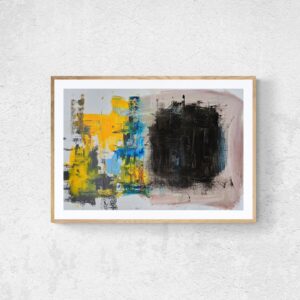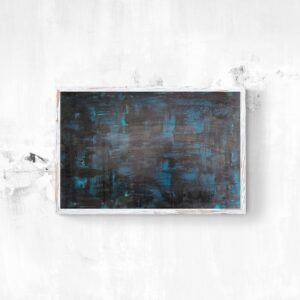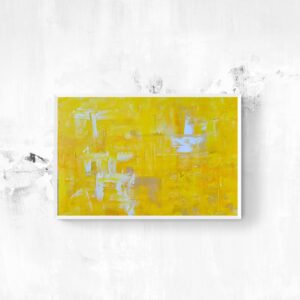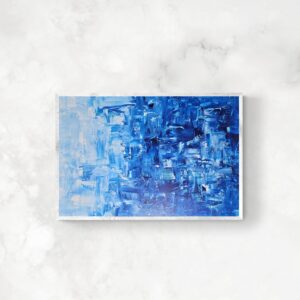
There is a distinctly patriotic flavor to Paris’s tentpole shows this fall. The Louvre is mounting what may be the most significant Jacques-Louis David exhibition in living memory, while the Petit Palais is doing his Napoleonic era contemporary Jean-Baptiste Greuze, and Georges de la Tour is at the Musée Jacquemart-André. The first two are both tied to anniversaries of some sort — the bicentenary of David’s death and the 300th anniversary of Greuze’s birth. Is it so bad to just do a really bloody good show on big French art history stalwarts without the flimsy excuse?
Major private spaces are also setting out their stall. The Fondation Cartier is opening an architecturally powerful new space to rival the Bourse de Commerce, home to the Pinault collection, which has conversely decided to go big (or small) with an expansive survey on Minimalism.
Perhaps more indicative of the current French zeitgeist is what’s happening outside the big museum circuit, like the new 7 Rue Froissart fair. Or maybe it’s the photography of American-born Tyler Mitchell, soon on view at the Maison Européenne de la Photographie. If you’d prefer to sink back into the nostalgia of a bygone era closer to home, you can learn more about Orson Welles at the Cinémathèque in a display marking 40 years since his death (yet another anniversary …).
Jacques-Louis David
Musée du Louvre, 99 rue de Rivoli, 75001
October 15–January 26

It is only fitting that France’s most important museum should mount a major retrospective of its most important 18th-century painter, marking two centuries since his passing in 1825. David lived and painted through six different political regimes and participated in the Revolution; his work is thus loaded with political heft and symbolism. The Louvre is drawing upon three decades of art historical research following the last monographical survey held in 1989, and the exhibition will feature masterpieces like “Les Sabines” (1799) and “The Death of Marat” (1793).
Jean-Baptiste Greuze: Childhood in the Spotlight
Petit Palais, Avenue Winston-Churchill, 75008
Through January 25

Though Greuze is better known for his iconic history painting, this exhibition highlights the artist’s prolific depiction of children and childhood. The museum takes these works as starting points to explore key topics of the period, from sociopolitical issues like education and the question of breastfeeding versus the use of wet nurses, to the eternal and existential — death, the recognition of the state of childhood, and emphatic experiences with relation to families and society (the giving of the dowry, Bible reading). Roughly 100 artworks from international collections will explore these and other themes against the backdrop of the Enlightenment.
7 Rue Froissart
7 Rue Froissart, 7 rue Froissart, 75003
October 19–25

This new fair is intended as an antidote to the rigidly structured process behind traditional shows, such as Art Basil Paris, which will take place concurrently. Brigitte Mulholland, who opened her eponymous gallery in Paris in 2024 after 20 years on the New York scene, is joining forces with Sara Maria Salamone, co-founder of Mrs. gallery in Queens, to foster a more collaborative, trans-disciplinary approach among participants. Expect experimental presentations and performances, including a drag act satirizing the Met Gala, throughout this refreshingly free event.
Georges de La Tour: From Shadow to Light
Musée Jacquemart-André, 158 Boulevard Haussmann, 75008
Through January 25

The first French retrospective on Georges de la Tour since 1997 focuses on the enduring appeal of chiaroscuro and its ability to imbue scenes with a drama of varying flavor, from the humane and humble in the depictions of ordinary folk to the intimate intensity of religious narratives and the moralizing intentions of genre paintings. Although there is no evidence that de la Tour traveled to Italy, the influence of Caravaggio is nonetheless apparent; it will be interesting to see how the show will approach the somber stillness of de la Tour’s treatment.
Tyler Mitchell: Wish This Was Real
Maison Européenne de la Photographie, 5/7 rue de Fourcy, 75004
October 15–January 25

Atlanta-born Tyler Mitchell made his name as the first Black photographer to shoot the cover of Vogue at the age of 23. As this major survey of his decade of work indicates, his images are grounded in the trappings of everyday life but capture the eternal questions of identity, self-awareness and — of course — beauty. Adding to the pan-historical scope is his ability to draw upon historical tropes and themes, like colonialism and its reverberations on what it means for the Black experience today, with a sense of breaking free. His photographs lend a dreamlike feel to his scenes set in nature, asking, rhetorically: “Was/is this real?”
Sargent: Dazzling Paris
Musée d’Orsay, Esplanade Valéry Giscard d’Estaing, 75007
Through January 11

An American giant of painting, John Singer Sargent remains relatively lesser known in France, something this exhibition aims to rectify — not least by focusing on the artist’s Parisian training when he studied under Carolus-Duran in 1874. Though rarely depicting Parisian scenes, Sargent nonetheless benefited from the whirling melting pot of artistic and contemporary society there, demonstrated by the 90 paintings arranged in collaboration with The Met, some never before exhibited in France. His 1884 portrait of Virginie Gautreau, which fell afoul of the Paris salon, will be given special focus as the catalyst for his virtual cultural expulsion from the country.
Gerhard Richter
Fondation Louis Vuitton, 8 avenue du Mahatma Gandhi, 75116
October 17–March 2

Following surveys of David Hockney, Joan Mitchell, and Basquiat, the Fondation Louis Vuitton continues its tour of 20th-century painterly big hitters with market darling Gerhard Richter, bastion of extremes — from photorealism to squeegee abstractions to and seemingly everything in between. Given the timespan from 1962 to 2024 and the prospect of 270 artworks, this must have been a mammoth feat to mount, though the promise of quieter interludes of punctuating sculptures and drawings — Richter halted painting in 2017 — should offer a comprehensive landscape of moods, themes, tones, and techniques.
Fondation Cartier’s New Home
Fondation Cartier pour l’art contemporain, 2 Place du Palais-Royal, 75001
October 24–ongoing

Foundation Cartier’s new location in a Haussmannian building opposite the Louvre was designed by Jean Nouvel, who transformed a historic structure with large bay windows that lend an openness toward the outside and five “mobile platforms” inviting flexibility and experimentation in exhibition design. The foundation’s intention to establish itself as a serious institution on the Parisian art stage is reflected in its inaugural exhibition, which will draw upon its entire collection spanning 40 years. What it chooses to display from its more than 100 collected artists will surely be its manifesto.
Minimal
Bourse de Commerce, 2 rue de Viarmes, 75001
Through January 19

In selecting not just from its own collection but also loans, Pinault chooses to expand on the often, ehm, minimal understanding of Minimalism as simply “less is more.” The collection will draw upon varying movements within this umbrella term, from the Mono-ha in Japan, which sought to bring objects together as an exploration of space and interdependency, to Neo-Concrete art of Brazil. An additional layer of curation by theme — Light, Balance, and Surface, for example — suggests the greater depth and meaning offered by an often misunderstood movement.
My Name Is Orson Welles
Cinémathèque, 51 rue de Bercy, 75012 Paris
Through January 11

The Cinémathèque française is celebrating this giant of cinema to mark the 40th anniversary of his death. Welles’s late-career, which included phoning-it-in activities such as an ill-advised Champagne commercial, has unfairly colored our perceptions of this polymath whose crowning achievement, his role in the 1941 film Citizen Kane, arrived at the age of 25. Though he made 12 films throughout his lifetime, the hundreds of works on view in this presentation are a reminder of the scope of his creative activity, spanning radio, sculpture, and drawing. Film buffs will likely delight in yet more primary evidence surrounding his iconic films.





